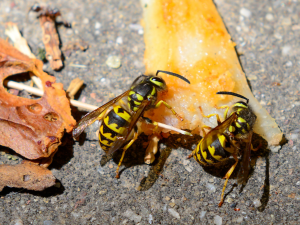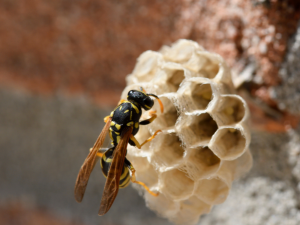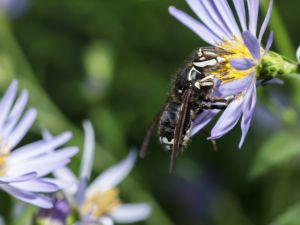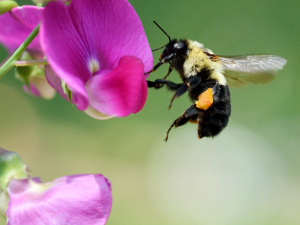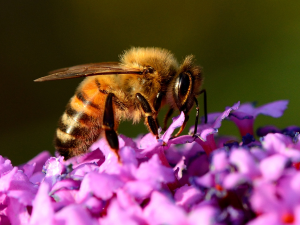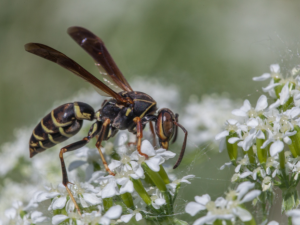Stinging Insect Facts
– Locals and visitors in Northern Colorado are stung most often by the European paper wasp or Western yellowjacket.
– Worker honey bees can only sting once as their barbed stinger pulls out and remains behind. All other stinging insects can sting repeatedly as they do not possess a barbed stinger.
– Honey bee colonies survive in hives all year long and then divide when swarming in late spring.
– Paper wasps, yellowjackets, baldfaced hornets and bumble bees abandon their old nest at the end of the year and build a new one.
– This first step in integrated pest management is to correctly identify the stinging insect species.
Western Yellowjackets
The Western yellowjacket is a well-known pest, particularly around outdoor dining areas. Western yellowjackets feed on sweets and dead animal material. Their nests are made of paper are often hidden, occurring underground or in cavities near the ground.
European Paper Wasp
The European paper wasp arrived in Colorado over 20 years ago. Since that time it has become a common stinging insect found in yards and gardens throughout the state. European paper wasps produce relatively small, single layer paper nests under eaves and overhangs or in above ground cavities. This stinging insect does not scavenge food, rather it is a predator of other insects. As their nests are often hidden, when they are disturbed, stings may occur.












